TasteAtlas, known as the “world food map,” has just released a list of the 50 most delicious street foods in the world, with Vietnamese bread ranking 6th on this list. Depending on each region and locality, Vietnamese bread will have different ingredients and preparation methods.
TasteAtlas notes that initially, Vietnamese bread was only filled with meat and some spices, without vegetables. However, nowadays, with unlimited creativity, Vietnamese bread is also filled with cold cuts, French butter, fresh mayonnaise sauce, liver pate, pickles, cilantro, pickled radish, oyster sauce, garlic, and more. Vietnamese bread must be light, with a thin crust while the inside is soft and chewy, with a hint of mild sweetness.
Vietnamese bread, a journey from “upper-class” bread to a street food that amazes the world
Originally a dish with Western origins, the constant refinement and creativity in Vietnam’s common bread have earned it recognition and a strong imprint on the world food map. On March 24th, on the Google homepage in over 10 countries, including Vietnam, vivid illustrations appeared to honor the bread. This marked the first time in the history of the giant in the U.S. technology field that a Doodle was designed to celebrate this popular Vietnamese dish.

Before that, on March 23, 2011, “banh mi” was officially added to the Oxford dictionary, confirming it as a separate noun: “Banh mi” – (banh mi /ˈbɑːn miː/). Not Vietnamese baguette, Vietnamese sandwich, or any identification with a specific dish that the world is familiar with; it is a unique name full of pride that affirms the sovereignty of a dish from Vietnam.
Origin of Vietnamese bread
In the early 19th century, the French brought baguettes to Gia Dinh (Saigon) to satisfy their refined culinary preferences. To create many delicious and hot bread loaves to meet the needs of the upper class, they built the first brick bread ovens in Vietnam.
This bread from France quickly became popular and widespread. It was then that the people of Saigon transformed the baguette into the distinctive bread of Vietnam, with a length of only about 30-40 cm. The closed structure allowed the moisture from these Indochinese ovens to be retained, making the baguettes hollow, with a fluffy interior and a crispy outer crust. This is the characteristic that distinguishes Vietnamese bread from Western bread.
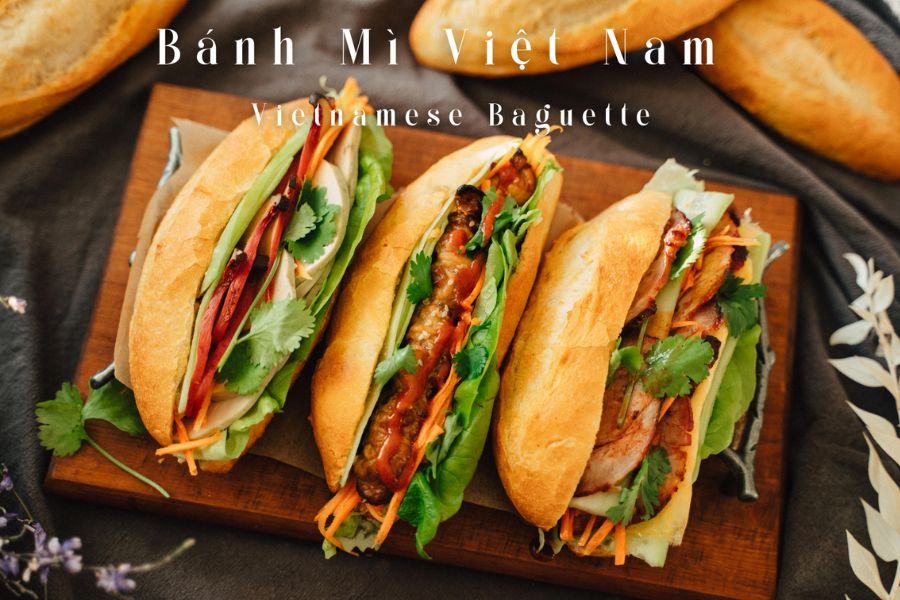
However, Vietnamese sandwich bread truly took shape when Mr. Hoa and Mrs. Tinh opened Hoa Ma bakery in 1958. Since Mrs. Tinh had worked for a cold cut company that supplied products to French restaurants in Hanoi, when they moved to Saigon, they opened a bakery selling bread and cold cuts to serve the locals.
Initially, the store served in the Western style, with bread and various cold cuts on a plate, accompanied by a knife and fork. However, they later realized that not everyone had time to sit and leisurely eat, so the owners of Hoa Ma bakery came up with the idea of stuffing meat, sausage, and pate into the middle of the bread for easy takeaway.
This method was well-received by busy students and officials. After a while, many meat-filled bread shops began to appear in Saigon and have been maintained to this day, such as Bany Ho, Hoang Hoa bread, and thousands of stalls with various types of fillings: meat, canned fish, pork sausage, and xiu mai (Vietnamese meatballs).
Over time, bread has become ubiquitous, adapted to please diverse diners: the filling becomes softer and thinner, the crust becomes thicker, and the size of the bread becomes smaller, making it more convenient to carry. Not only that, but it has also become a “national” fast food for everyone due to its diversity, convenience, and, most importantly, its very low cost.
Bread in each region has its own special characteristics
In this S-shaped land, bread can be found in any city, any street, from ordinary labor neighborhoods to bustling commercial centers, from sidewalks to luxurious hotels. What’s interesting is that you can encounter different versions, taste various flavors – corresponding to the culinary characteristics of each city and region.
For example, in Hanoi, the bread seems much simpler than in many other places. It’s hard to find a large, overflowing bread with lots of meat and vegetables in Hanoi simply because people there don’t like it!
Traditional Hanoi-style bread includes fragrant butter, liver pate, a bit of shredded pork, ham, char siu, and a few slices of gio (Vietnamese pork roll). The accompanying vegetables usually consist of cilantro, pickled radish, and a traditional-style chili sauce or a sauce used for pho, which is tongue-burning spicy.
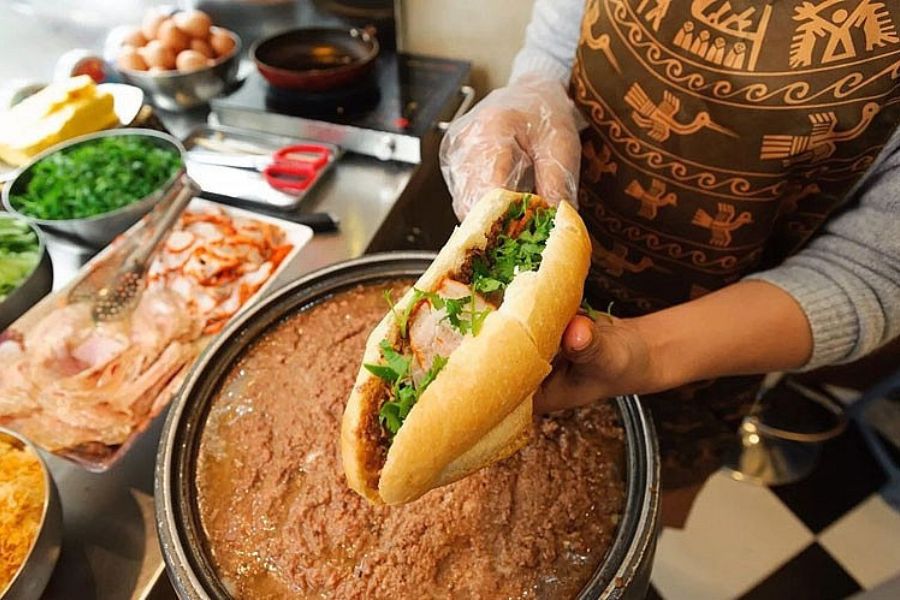
But the traditional Hanoi bread is still surprisingly delicious, thanks to the crispy texture of the bread perfectly combined with the delicious taste of meat and spices. Nothing inside the filling of Hanoi bread is excessive. The shredded pork helps absorb the chili sauce, and the liver pate creates moisture, softness just enough inside, while the crispy outer crust is not soaked by too much sauce in the characteristic humid weather.
In Hai Phong, you will be fascinated by the “stick bread.” The bread is only the size of two adult fingers, but it can make people fall in love with the generous and creamy layer of pate, drizzled with a kind of spicy sauce from Hai Phong called “chí chương.” The small bread is always baked hot, so when eaten, you can clearly feel the crispness of the crust, the softness, and spiciness of the filling that is extremely mouth-watering. It’s no wonder that when eating stick bread, people often order a dozen at a time to enjoy to the fullest.
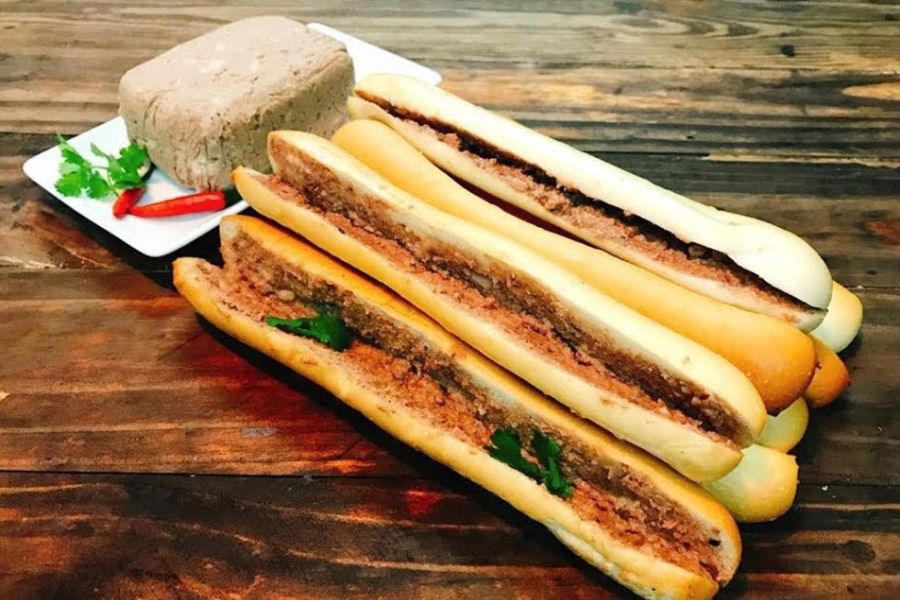
In Hoi An, where some bakeries make international chefs marvel, bread has its own unique variations. The bread is only as large as half an adult’s palm, with a crispy crust, dense and fragrant filling.
The most special thing is the diversity of the filling for Hoi An bread, with up to ten different types. Whether it’s ham, pork roll, sausage, grilled meat, chicken, eggs, cheese, not to mention various types of butter and sauces processed according to each shop’s formula, and the aromatic herbs from the Tra Que village make consumers want to eat two at a time.
Biting into a bread full of filling, rich tropical flavor, and harmony in both color and taste, you will easily understand why Hoi An bread is so popular and increasingly appears in cities inside and outside the country.
If you go to Dalat to eat xiu mai bread, you will find that the bread here is slightly thicker. People will serve it with a cup of xiu mai, still smoking, with a flavorful sauce covering the xiu mai balls and pork skin. You can either dip the xiu mai in sauce, spread it on the bread and eat each small piece, or break off a large piece of bread, layer it with sausage, pork skin, and pour on top the bland soup that has been boiled and a bit of spicy chili, making the coldness of the highlands disappear.
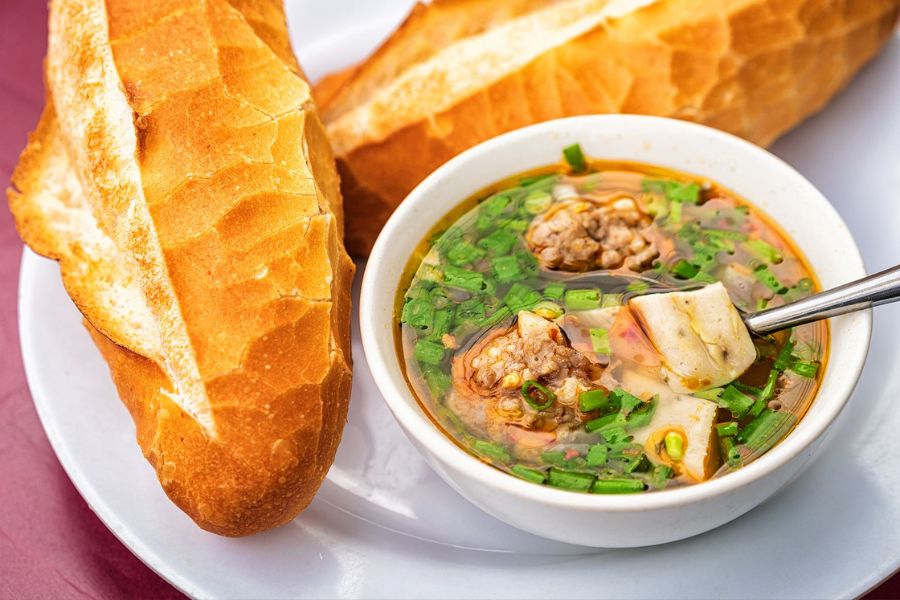
The experience of eating bread in the South is completely different. Due to favorable natural conditions, bread in the South is often added with a lot of vegetables: a few slices of cucumber, white radish, carrot soaked in vinegar, and some green onions, cilantro, and a few slices of chili.
Not just a simple meat sandwich with vegetables, people in Saigon have added many variations to the filling for the bread: egg bread, xiu mai bread, roast pork bread, shredded pork skin bread, fish paste bread, beef stew bread… The distinctive flavor of Saigon bread is perhaps the flavor of openness, like the diversity of bread fillings, the enthusiasm like the crispy and chewy crust and various wet sauces without fear that the bread will lose its deliciousness.
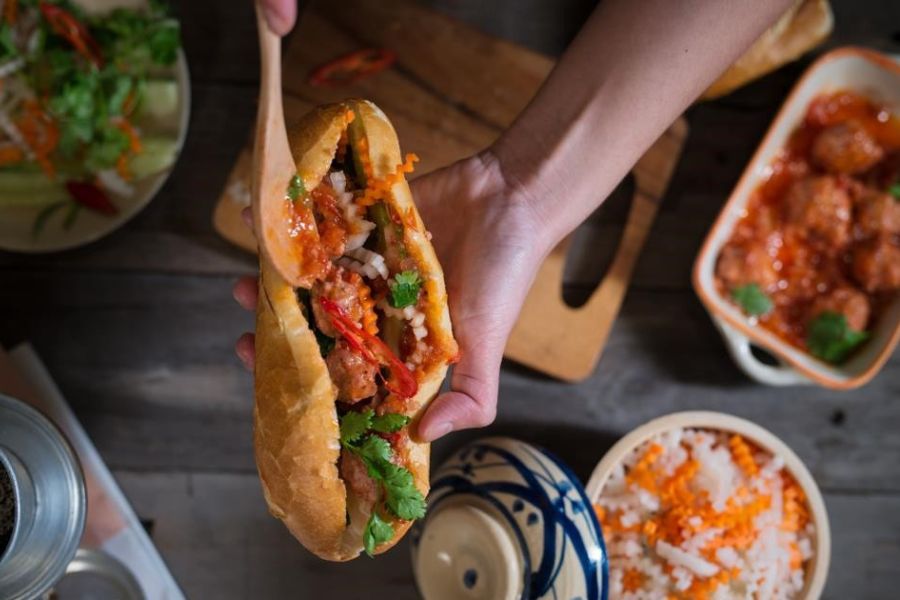
Over 150 years in Vietnam, whether old or new, the variations of bread have never disappointed food enthusiasts. This attraction reminds us how lucky we are to live in a country where, just by stepping out, turning into any simple alley, we can taste exquisite cuisine that makes the whole world crazy. Above all, these innovations also prove that the Vietnamese people love bread so much and can be open to it in any way possible.
